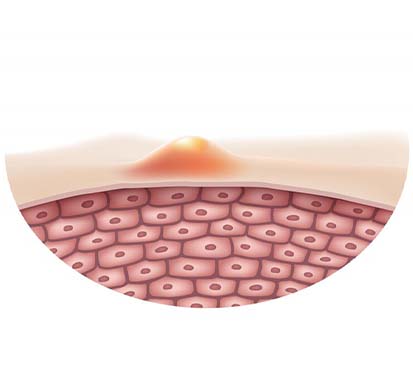
A sebaceous cyst is a common type of benign skin growth that forms beneath the skin. These cysts develop when sebaceous glands — the glands responsible for producing sebum, a natural oil that lubricates the skin and hair — become blocked. Sebaceous cysts are often slow-growing and can vary in size, from small pea-sized lumps to larger masses.
Sebaceous cysts are most frequently found on the face, neck, back, or torso, but they can occur anywhere on the body. While these cysts are generally painless and harmless, they may cause discomfort, infection, or cosmetic concerns if they grow larger or become inflamed. Although some sebaceous cysts may resolve on their own, medical intervention is often required to prevent complications.
At our sebaceous cyst treatment hospital in Kolathur and sebaceous cyst clinic in Mogappair, we specialize in diagnosing and treating sebaceous cysts using safe and effective methods. Our skilled medical team provides personalized treatment plans that focus on complete cyst removal, minimizing discomfort, and ensuring fast recovery.
Sebaceous cysts typically develop gradually and may go unnoticed in the early stages. Recognizing their signs and symptoms can help in seeking timely treatment. Common symptoms include:
If you notice any unusual lumps or experience pain, it’s important to consult our specialists at our sebaceous cyst treatment hospital in Kolathur or sebaceous cyst clinic in Mogappair for proper evaluation and effective treatment.
While some sebaceous cysts may not require immediate treatment, surgical removal is often recommended in the following situations:
At our sebaceous cyst treatment hospital in Kolathur and clinic in Mogappair, our experienced surgeons use advanced surgical techniques to ensure complete removal of the cyst along with its sac. This method minimizes the risk of recurrence while ensuring minimal scarring and a smooth recovery process.


Accurate diagnosis is crucial for effective treatment. Our specialists follow a comprehensive evaluation process to determine the most suitable treatment plan for each patient.
- Physical Examination: Our medical team carefully assesses the cyst’s size, texture, and location to confirm it is a sebaceous cyst.
- Ultrasound Imaging: In certain cases, ultrasound imaging may be performed to examine the internal structure of the cyst and distinguish it from other types of skin growths.
- Biopsy (if necessary): If the cyst appears unusual or shows signs of malignancy, a biopsy may be conducted to rule out serious conditions.
